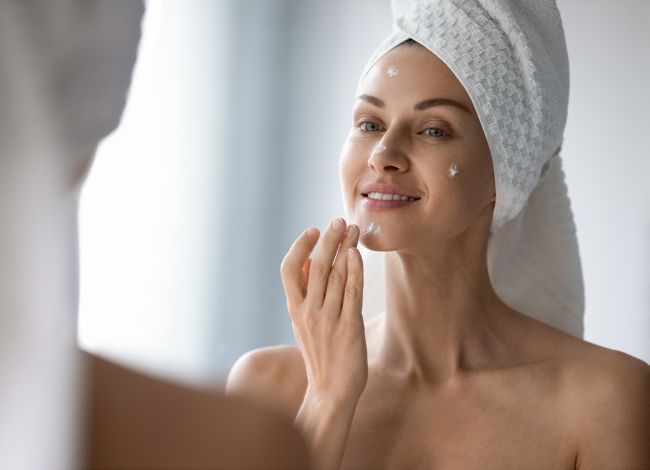SQUALANE VS SQUALENE
Both squalane and squalene have been used as ingredients in skincare formulations for some time but do you know the difference between the two?
The squalane hashtag has gained significant attention of late, with over 36 million views on TikTok, and 60,000 posts on Instagram.
Professional Beauty UK’s Ellen Cummings writes that squalane is actually derived from the term squalene, a type of lipid (the building blocks of cells) which is found in many plants and animals, including humans. Approximately 10-12% of human sebum consists of squalene, according to Rebecca Jones, a trainer and ambassador for Noon Aesthetics.
Squalene is a natural emollient, helping to keep skin soft and moisturised, and protecting it from the environment.
Traditionally, the squalene we used in products was primarily sourced from shark liver oil – its name comes from ‘Squalus’, which is a genus of shark. However, due to the ethical and sustainability concerns which come from sourcing squalene from animals, we’ve now developed alternative sources, including biosynthetic squalene made from yeast and bacteria.
Natural organic compounds
Both squalene and squalane are natural organic compounds but they differ in terms of their structure and properties.
Cigdem Kemal Yilmaz, a skincare formulator and founder of Skin Masterclass, explains: “Squalene is an unsaturated high hydrocarbon compound naturally found in certain oils, while squalane is the hydrogenated and most stable form of squalene.
“Squalane possesses a unique molecular structure which imparts several notable properties, including excellent stability, low viscosity, and high oxidative stability. Furthermore, its lack of double bonds renders squalane highly resistant to oxidation and degradation, making it an ideal ingredient for use in skincare products.”
The squalane we use in skincare usually comes from natural sources. “Today, the majority of squalane is sourced from plant derived oils using advanced extraction techniques such as molecular distillation and fractionation,” comments Kemal Yilmaz.
She adds, “Squalane is a more sustainable and ethical alternative to squalene because it can be sourced from plant-based ingredients like sugar cane, olives, or rice bran, reducing the environmental impact associated with harvesting squalene from sharks.”
Thus, squalane is more frequently found in skincare than squalene.

Image from Shutterstock
Benefits
Squalane has emollient properties, so it helps to moisturise the skin and prevent transepidermal water loss. Its anti-inflammatory properties soothe and calm the skin, helping to reduce redness, irritation and sensitivity.
“This makes it great for conditions like acne and eczema and it can assist in reducing redness,” comments Kelly Saynor, clinical director of Medica Forte, creator of The Perfect Peel Superblend.
“Squalane also has natural antioxidant properties, which helps protect the skin from free radicals and oxidative stress,” adds Kemal Yilmaz. “By neutralising free radicals, squalane helps reduce the signs of ageing and promote healthier-looking skin.
“Additionally, it can promote skin cell regeneration and renewal by maintaining the skin’s barrier function, supporting the skin’s natural exfoliation process and improving the overall texture of the skin.
“Being non-comedogenic, it does not clog pores and has a lightweight, non-greasy texture suited to a wide range of skin types.”
Product categories
Squalane is usually found in moisturisers, lotions, serums and cleansers which are designed to enhance hydration and protect the skin barrier.
It is also found in facial oils combined with other oils such as argan oil and jojoba oil, as well as in lip balms and sun protection products.
Source: https://professionalbeauty.co.uk/site/ newsdetails/everything-you-need-to-know-aboutsqualane